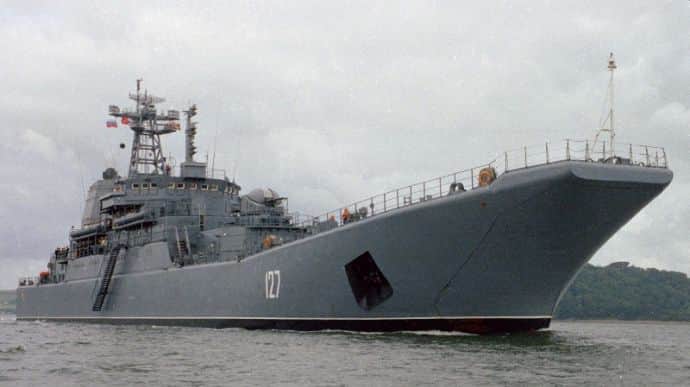British admiral - Navies face ‘dreadnought’ moment as Ukraine destroys more Russian warships.
“We're once again facing something completely new, a paradigm shift,” the First Sea Lord said.
LONDON—Hours after Ukraine destroyed a Russian Kilo-class submarine sitting in dry dock, Britain’s top naval officer hailed a new era of naval warfare.  Uncrewed vessels and automation have delivered a “dreadnought moment,” said Adm. Sir Ben Key, alluding to advances in propulsion, gunnery, and armor that led the British and German navies to overhaul their strategies in the early 1900s.
Uncrewed vessels and automation have delivered a “dreadnought moment,” said Adm. Sir Ben Key, alluding to advances in propulsion, gunnery, and armor that led the British and German navies to overhaul their strategies in the early 1900s.
“We're once again facing something completely new, a paradigm shift,” Key said, speaking at the arms show DSEI in London on Wednesday.
The Royal Navy's First Sea Lord highlighted Britain’s own progress on unmanned systems, citing British development of the largest European unmanned submarine, the Cetus, the deployment of an unmanned minesweeper, and experiments in uncrewed air systems.
Key called out Ukraine’s strikes on Russia’s Black Sea fleet with missiles and explosive-laden unmanned vessels as particularly important for Britain’s navy.
On the one hand, Ukraine’s successful attacks show navies what types of offensive capabilities and tactics they should consider for themselves, Key said. On the other hand, the success of such attacks meant navies should reconsider their defensive strategies.
Britain must “make sure we don't make ourselves vulnerable to the very same things that the Ukrainians have managed to affect against the Russians,” Key said.
Ukraine lost much of its navy following Russia’s annexation of Crimea in 2014, and suffered yet further major losses soon after Russia’s full-scale invasion of the country last February. In early March Ukraine chose to scuttle its last remaining frigate when Russian forces neared its berth in the port city of Mykolaiv.  Since then, Ukraine has notched numerous wins against Russia. In April of 2022, Ukraine sunk Russian Black Sea flagship the Moskva using Neptune missiles, followed up by sinking the supply ship the Spasatel Vasily Bekh with Harpoon missiles.
Since then, Ukraine has notched numerous wins against Russia. In April of 2022, Ukraine sunk Russian Black Sea flagship the Moskva using Neptune missiles, followed up by sinking the supply ship the Spasatel Vasily Bekh with Harpoon missiles.  Amid increasing Ukrainian drones use on land, Ukrainians soon adapted uncrewed technology for boats as well.
Amid increasing Ukrainian drones use on land, Ukrainians soon adapted uncrewed technology for boats as well. 
On June 17, Ukraine used a naval drone dubbed the “Sea Baby” to damage the Kerch bridge, which connects the Russian-occupied peninsula of Crimea to Russia.

In August, a drone boat sailed hundreds of miles from Ukrainian territory, entered the Russian port of Novorossiysk, and severely damaged a Russian warship.  Early Wednesday morning, Ukraine launched a missile and naval drone attack that damaged both the submarine Rostov-on-Don and the landing ship Minsk. While it was not immediately clear what degree of damage the ships had suffered, photos showed large fires.
Early Wednesday morning, Ukraine launched a missile and naval drone attack that damaged both the submarine Rostov-on-Don and the landing ship Minsk. While it was not immediately clear what degree of damage the ships had suffered, photos showed large fires. 
In contrast to the lengthy production timelines for traditional naval ships, Ukraine’s Magura V5 unmanned vessel could be churned out at a rate of 20 vessels per week, said Ivan Sybryiakov of Ukraine’s SpetsTechnoExport. The vessel has already been used in attacks on Russian targets, he added.
The drone, designed by a mix of commercial and military engineers, relies on commercial technology as a cost saving measure.
Such vessels in particular rely on cheap commercial satellite technology for guidance, which can bring problems of its own. In August, Starlink’s founder, Elon Musk, was reported to have placed limitations on Starlinks use that interfered with a planned Ukrainian naval drone attack on Russian ships. Starlink systems can also be jammed, including by relatively simple GPS jamming.
Still, Sybryiakov called Starlink a “very big advantage,” despite the restrictions Musk has placed on the systems’ use.




No comments:
Post a Comment
Note: Only a member of this blog may post a comment.